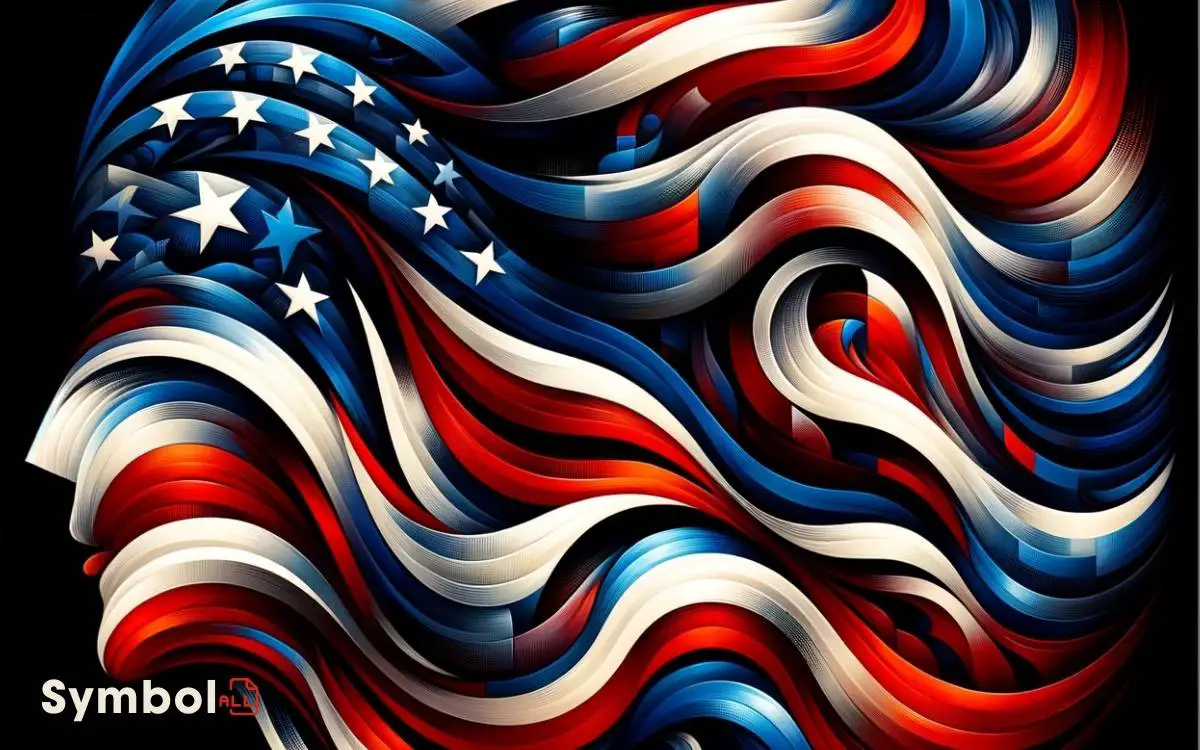What Do the Colors of the US Flag Symbolize? A Guide!
The colors of the U.S. flag hold deep meanings, reflecting the nation’s ideals.
- Red symbolizes valor and hardiness, a nod to the bravery and strength displayed throughout history.
- White signifies purity and innocence, embodying the moral integrity and peace the nation aspires to.
- Blue stands for vigilance, perseverance, and justice, foundational pillars that guide the country’s governance and societal conduct.
These colors trace back to the American Revolution, embodying the fight for liberty and the values that continue to shape America.
As you explore further, you’ll uncover how these symbols evolve, mirroring the nation’s journey and challenges.

Key Takeaway
The Historical Origin of the Flags Colors
The historical origin of the US flag’s colors traces back to the American Revolution, embodying ideals of liberty, valor, and purity.
You’ll find that these colors weren’t chosen at random. They’re steeped in meaning, each playing an essential role in the narrative of the nation’s birth.
White symbolizes purity and innocence, reflecting the country’s aspirations for justice and moral high ground.
Blue stands for vigilance, perseverance, and justice, mirroring the steadfast spirit that drove the fight for independence.
These colors, together with red, which we’ll explore later, form a palette that’s more than aesthetic.
They’re a visual manifesto of the values and principles on which the United States was founded, intended to remind you of the sacrifices made for freedom and the ongoing commitment to these founding ideals.
Red: Valor and Hardiness
Red embodies the nation’s valor and hardiness, qualities that were essential in the struggle for independence and continue to define its spirit.
This color, a vivid symbol of strength and bravery, paints a picture of the resilience and endurance demonstrated by the founding fathers and early Americans.
It’s not just a hue; it’s a confirmation to the sacrifices made for the country’s freedom and the unwavering courage of its people.
Every stripe of red on the flag whispers tales of battles fought, lives given, and the relentless spirit of a nation that wouldn’t bow.
It’s a reminder that valor isn’t merely about the might to conquer but the fortitude to stand steadfast in the face of adversity, a characteristic as relevant today as it was centuries ago.
White: Innocence and Purity
Moving beyond the courage symbolized by red, white stands as a confirmation of the nation’s foundational values of innocence and purity.
This color isn’t chosen arbitrarily; it’s deeply imbued with meaning that reflects the ideals the United States aims to embody.
When you observe the white stripes and stars against the flag’s fabric, you’re witnessing a visual representation of these core principles:
- Innocence – Reflecting the country’s desire to maintain moral integrity in its actions and policies.
- Purity – Symbolizing the aspiration towards unbiased governance and justice for all citizens.
- Unity – Despite diverse backgrounds, the white binds different elements together, suggesting unity in diversity.
- Peace – A reminder of the nation’s preference for peace over conflict, whenever possible.
These layers of meaning contribute to a deeper understanding of the flag’s symbolism.
Blue: Vigilance and Justice
Shifting focus to the vibrant blue in the US flag, we uncover its representation of vigilance and justice, fundamental pillars that uphold the nation’s ideals and governance.
This shade of blue is not arbitrary but deeply symbolic, embodying the continuous watchfulness and fairness that the nation endeavors to maintain.
| Aspect | Significance |
|---|---|
| Vigilance | Constant Watchfulness |
| Justice | Fairness in Governance |
| Blue Color | Representation of both |
Analyzing this, you grasp how the blue not only decorates the flag but also conveys a powerful message about the country’s commitment to these principles, ensuring they remain at the forefront of the national consciousness.
The Evolution of Flag Symbolism
Over time, the symbolism of the US flag has evolved, reflecting shifts in the nation’s values, challenges, and achievements.
This evolution can be understood through key aspects:
- Original Representation: The flag initially symbolized the new union and independence from British rule, with stars and stripes representing states and unity.
- Civil War Era: During this period, the flag began to embody the struggle for preserving the Union and abolishing slavery, highlighting the nation’s resilience.
- World Wars: The flag’s symbolism expanded to include the fight for freedom and democracy globally, showcasing America’s role on the world stage.
- Civil Rights Movement: It also came to represent the ongoing struggles for equality and justice within the country, reflecting the dynamic nature of American ideals.
The Colors in Modern American Culture
Having explored the evolving symbolism of the US flag, let’s now examine how its colors resonate within modern American culture.
Red, white, and blue aren’t just present on the flag; they permeate various aspects of American life, symbolizing patriotism and national pride. These hues can be seen in parades, sporting events, and even fashion, serving as a unifying thread across diverse communities. The flag colors and symbols meaning extends beyond aesthetics, reflecting ideals like valor, purity, and justice. This deep connection fosters a sense of shared identity among citizens, celebrating the nation’s history and values.
In sports, athletes don these colors to represent the nation on international stages, embodying unity and competitiveness.
During national holidays like the Fourth of July, these colors decorate everything from banners to clothing, reinforcing a sense of community and shared history.
In political contexts, the colors signify allegiance and the ideals of freedom and democracy. Importantly, they serve as a visual reminder of the sacrifices made for the country’s independence and ongoing commitment to its founding principles.
This deep-seated symbolism illustrates their enduring relevance in embodying American values and identity.
Conclusion
In wrapping up, it’s fascinating to note that a staggering 150 million American flags are sold every year, showcasing the deep-seated patriotism and unity the colors symbolize.
The red, white, and blue aren’t just aesthetic choices; they’re powerful representations of valor, purity, and justice integral to the American identity.
This adoption and evolution of the flag’s symbolism reflect its enduring significance in modern American culture, a validation to the principles the nation stands for.






